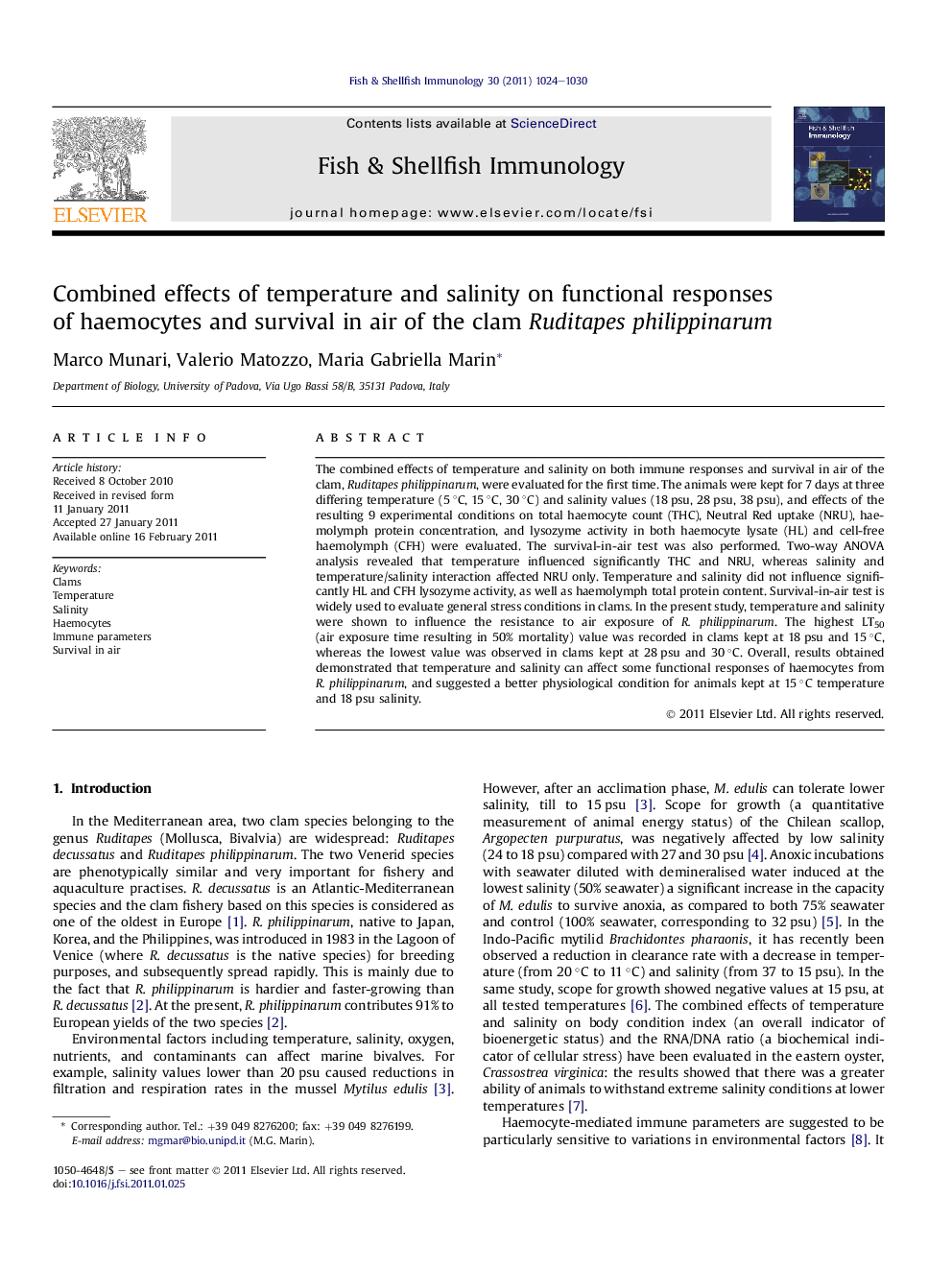| کد مقاله | کد نشریه | سال انتشار | مقاله انگلیسی | نسخه تمام متن |
|---|---|---|---|---|
| 2432443 | 1553629 | 2011 | 7 صفحه PDF | دانلود رایگان |

The combined effects of temperature and salinity on both immune responses and survival in air of the clam, Ruditapes philippinarum, were evaluated for the first time. The animals were kept for 7 days at three differing temperature (5 °C, 15 °C, 30 °C) and salinity values (18 psu, 28 psu, 38 psu), and effects of the resulting 9 experimental conditions on total haemocyte count (THC), Neutral Red uptake (NRU), haemolymph protein concentration, and lysozyme activity in both haemocyte lysate (HL) and cell-free haemolymph (CFH) were evaluated. The survival-in-air test was also performed. Two-way ANOVA analysis revealed that temperature influenced significantly THC and NRU, whereas salinity and temperature/salinity interaction affected NRU only. Temperature and salinity did not influence significantly HL and CFH lysozyme activity, as well as haemolymph total protein content. Survival-in-air test is widely used to evaluate general stress conditions in clams. In the present study, temperature and salinity were shown to influence the resistance to air exposure of R. philippinarum. The highest LT50 (air exposure time resulting in 50% mortality) value was recorded in clams kept at 18 psu and 15 °C, whereas the lowest value was observed in clams kept at 28 psu and 30 °C. Overall, results obtained demonstrated that temperature and salinity can affect some functional responses of haemocytes from R. philippinarum, and suggested a better physiological condition for animals kept at 15 °C temperature and 18 psu salinity.
► Temperature influenced significantly total haemocyte count and Neutral Red uptake in clams.
► Salinity and temperature/salinity interaction affected Neutral Red uptake.
► The highest resistance to air exposure was found at 18 psu and 15°C, the lowest at 28 psu and 30°C.
► Overall better physiological condition was shown at 15°C temperature and 18 psu salinity.
Journal: Fish & Shellfish Immunology - Volume 30, Issues 4–5, April–May 2011, Pages 1024–1030